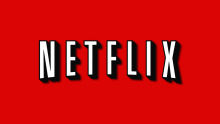 One of the biggest uses of bandwidth continues to be streaming video from the many online vendors like Netflix, Disney, Hulu, and many others. Final 2022 earnings reports show that this is an industry segment in crisis.
One of the biggest uses of bandwidth continues to be streaming video from the many online vendors like Netflix, Disney, Hulu, and many others. Final 2022 earnings reports show that this is an industry segment in crisis.
- Warner Brothers, which owns HBO and Discovery reported losses for online video of as much as $2.3 billion in 2022.
- Paramount reported losses of $1.8 billion for its online platform.
- Comcast and its NBC Universal subsidiary that operates Peacock reported losses in 2022 of $2.5 billion.
- Disney reported a loss of $4.1 billion for its Disney Plus platform, which is hard to fathom with a platform that has 162 million subscribers.
Altogether, the losses for just these four video platforms were almost $11 billion in 2022. There are other big platforms like Apple, Google (YouTube), and Amazon that don’t specifically report on the performance of the video streaming segment. There is one exception to the trend towards losses as Netflix, with 230 million global customers, reported profits of over $6.5 billion in 2022.
The companies with the losses have already reported taking measures to trim the losses. That involves some staff cuts, but mostly it’s going to mean cutting back on the budget for developing new content.
This raises some interesting questions about how the performance of the video streaming industry segment will affect broadband. There has been a significant proliferation of video platforms. Ten years ago, you could count the video platforms on one hand. The earliest platforms like Netflix and Amazon spent almost all of their content budget buying existing TV shows and movies.
But in 2013, Netflix broke the mold with the introduction of House of Cards, followed by a ton of original content. Amazon followed suit in 2015 with the introduction of The Man in the High Castle and Mr. Robot, and now with a wide array of original programming. It now seems that every platform has original content, which seems to be the primary strategy for attracting new subscribers.
It’s hard to think that the industry can sustain these kinds of losses for a long time. Netflix purposefully lost money as it was building its platform, and the company knew it wouldn’t be profitable until it eventually got a lot of subscribers. But with the proliferation of platforms, the idea of any platform suffering losses to get to the top seems like a difficult model to repeat.
One of the ways for the industry to become profitable is to raise rates, but with so much competition, that doesn’t look like an easy solution. Anyone who has tracked subscribers at platforms like Hulu or SlingTV can see how customer counts shrink and grow quarter to quarter. Very few of these platforms have developed a stable, loyal customer base, and the online platforms have made it easy for subscribers to come and go at will – their big differentiator from traditional cable.
The chances are that poor performance, or even the disappearance of a few platforms won’t make much of a difference in the industry overall. If a few of these platforms fail, the subscribers will watch video elsewhere. Probably the only thing that would cause cord-cutting to slow might be if the online platforms raise rates to the point where people decide to keep traditional cable.
Probably the best news for online platforms is that traditional cable companies keep raising rates, largely in response to the ever-climbing cost of traditional TV programming. The programmers seem determined to raise rates significantly every year, even in the face of losing customers. For many traditional programmers, the loss of American subscribers is being offset by a growing audience around the world.



